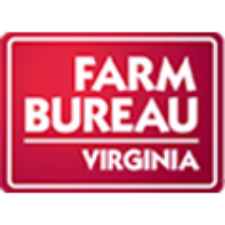
“It has been a wonderful experience for all my children” growing up on the farm, Jim Fitzsimmons said. “We’ve raised sheep. We’ve shown sheep. We’ve raised cattle here. We’ve raised chickens. For them to have that childhood experience that can’t be offered anywhere else, it’s so precious.
“If you look out and you see the open fields … we would lose that value forever” if the property were developed, Fitzsimmons said. “And that is something I am committed to preventing.”
The Fitzsimmons family is not alone in being concerned about losing farmland in Virginia. Until the 20th century, land devoted to farming and forestry covered most of the state. By 1960, only half of Virginia’s approximately 25 million acres remained in farmland. In 2012, the total was a little more than 8.3 million acres, a loss of more than 5 million acres in less than 50 years.
At the same time, agriculture and forestry remain the state’s most valuable economic sector, worth $71 billion a year, according to a University of Virginia study.
In 2001 the Virginia General Assembly established the Office of Farmland Preservation within the Virginia Department of Agriculture and Consumer Services. That division of VDACS administers the state’s purchase of development rights program that was approved in 2007.
“That is a program that provides matching funding to localities to help preserve local land use easements,” said Andy Sorrell, OFP coordinator. “While the state provides matching funding, it is up to localities to determine which farms are the most important” to preserve.
The office also supervises the Farm Link program, a computer database of would-be farmers and current farmers interested in passing their operations on to the next generation. Other tools used to preserve farmland include land use-based taxation, transfer of development right, agricultural and forestal zoning districts and conservation easements.
For more information on Farm Link, PDRs or other farmland preservation issues, contact the office at 804-786-1906.










